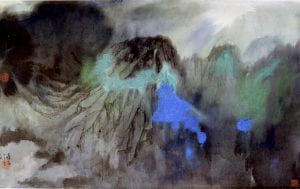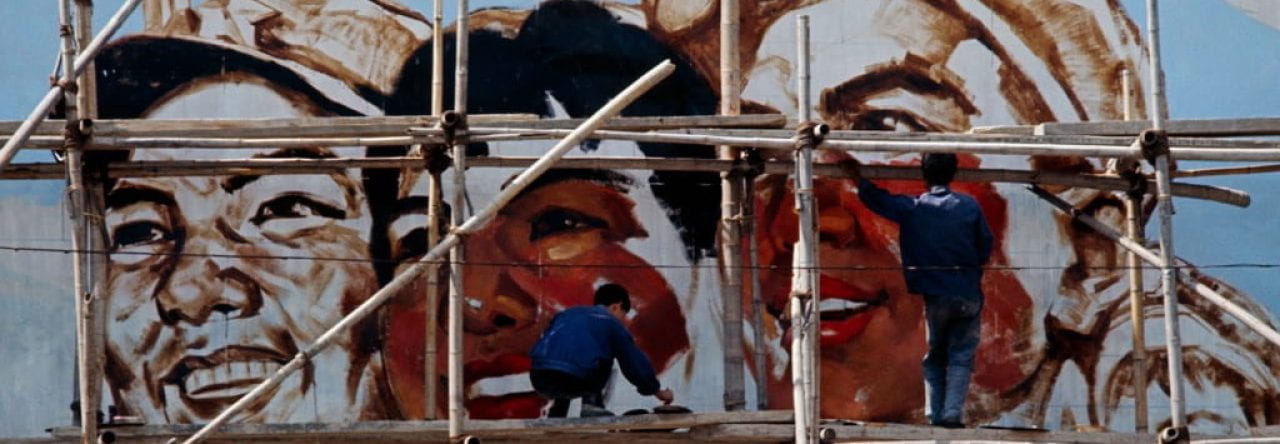A pivotal figure in Chinese art history, Zhang Daqian (1899-1983) made important contributions to the art world over the course of a career that spanned six turbulent decades (Sullivan, 1996). Zhang is a particularly diverse artist whose work includes modern art experiments as well as traditional Chinese painting, giving a visual picture of the cultural changes that occurred in China over the 20th century (Shen, 2012).
The proposed exhibition will highlight Zhang’s artistically flexible answers to societal and political upheavals. The issue is particularly important because it emphasizes how art functions as a form of resistance and perseverance during times of significant cultural and political change (Wang, 1998).
Zhang’s body of work reflects China’s more general cultural and political changes. His early paintings, which are steeped in the tradition of classical Chinese painting, exhibit precise brushwork and composition (Sullivan, 1996). Zhang’s style did, however, change to embrace elements of modernism with the beginning of Communist control, most notably in his later splash-ink works (Shen, 2012). This artistic change, which demonstrates Zhang’s tenacity, can be seen as a silent protest against the Communist government’s limiting ideologies (Wang, 1998).
The socio-political turmoil in China during the 20th century had a big impact on Zhang’s development as an artist. Zhang chose self-exile after the Communist Party took power in 1949, first settling in Taiwan before moving on to Brazil and California (Sullivan, 1996). His geographic dislocation made it possible for him to incorporate various cultural influences into his work, bridging the gap between tradition and modernity and East and West (Shen, 2012).
When Zhang’s work is considered in the perspective of China’s 20th century history as a whole, it becomes clear how Zhang and his contemporaries, like Qi Baishi and Xu Beihong, struggled with the conflict between tradition and modernity (Sullivan, 1996). Their work displays a common tenacity in the face of significant change (Wang, 1998).
The works of Zhang Daqian offer an intriguing prism through which to explore the interaction between art and its historical setting. Studying his work and the tenacity it displays helps us understand the larger story of cultural change and resistance in 20th-century China. Zhang’s aptitude at juggling tradition and innovation during alterations in his personal and political circumstances emphasizes the legacy’s continuing importance in the discussion of art history (Shen, 2012).

“Dwelling in the Qingbian Mountains” (1947) – One of Zhang’s most renowned paintings, it exhibits the classic Chinese landscape painting technique (Sullivan, 1996). It is a wonderful example of Zhang’s early style before the Communist takeover because of the tedious brushwork and composition, which mirror the traditional Chinese painting heritage.

“A Lotus” (1950) – Zhang produced this piece while living in self-imposed exile in Taiwan. It illustrates his fortitude and versatility amid a time of significant political and personal upheaval (Shen, 2012). Bold color and large brushstrokes are used, which shows an experimental style and a preference for modernism.

“Lotus and Mandarin Ducks” (1963) – This picture was produced when Zhang was in Brazil and it demonstrates the influence of Western art on his work and signals a significant break from his traditional roots (Sullivan, 1996). This artwork exemplifies the blending of tradition and modernity, as well as East and West.

“Splashed Color Landscape” (1965) – This piece is an example of Zhang’s later work, which is distinguished by his inventive splash-ink style (Wang, 1998). It represents Zhang’s fortitude and inventiveness as an artist and serves as a symbol of his defiance of Communist government restrictions.
References:
- Sullivan, M. (1996). Art and Artists of Twentieth-Century China. University of California Press.
- Shen, K. (2012). Zhang Daqian and the Chinese Art Market. Art Journal, 12(4), 76-89.
- Wang, E. (1998). The Art of Resistance: Zhang Daqian’s Splashed-Color Landscape. Modern China, 24(4), 408-434.


Alexander Mendel
Hi, aweome work. I have three questions:
1. Did Zhang’s works make their way into Chinese society? Was it not until after? You had mentioned he had become detatched.
2. What is the “gap” between traditional and modern works? Is it the medium– technique– message-?
3. What can we learn about our relationship between art and society based off of Zhang’s ability to adapt to his new surroundings post-exile?
Zeji Lin
I think it will be interesting to see how Zhang’s works change under different political circumstances. By studying how contemporary artists reflect their ideologies in their works, I agree that we can better understand the larger story of cultural change and resistance in different periods of time. A part of my exhibition theme also includes how artists connect the cultural and political gaps through their work, which is a point I can emphasize after reading your theme.